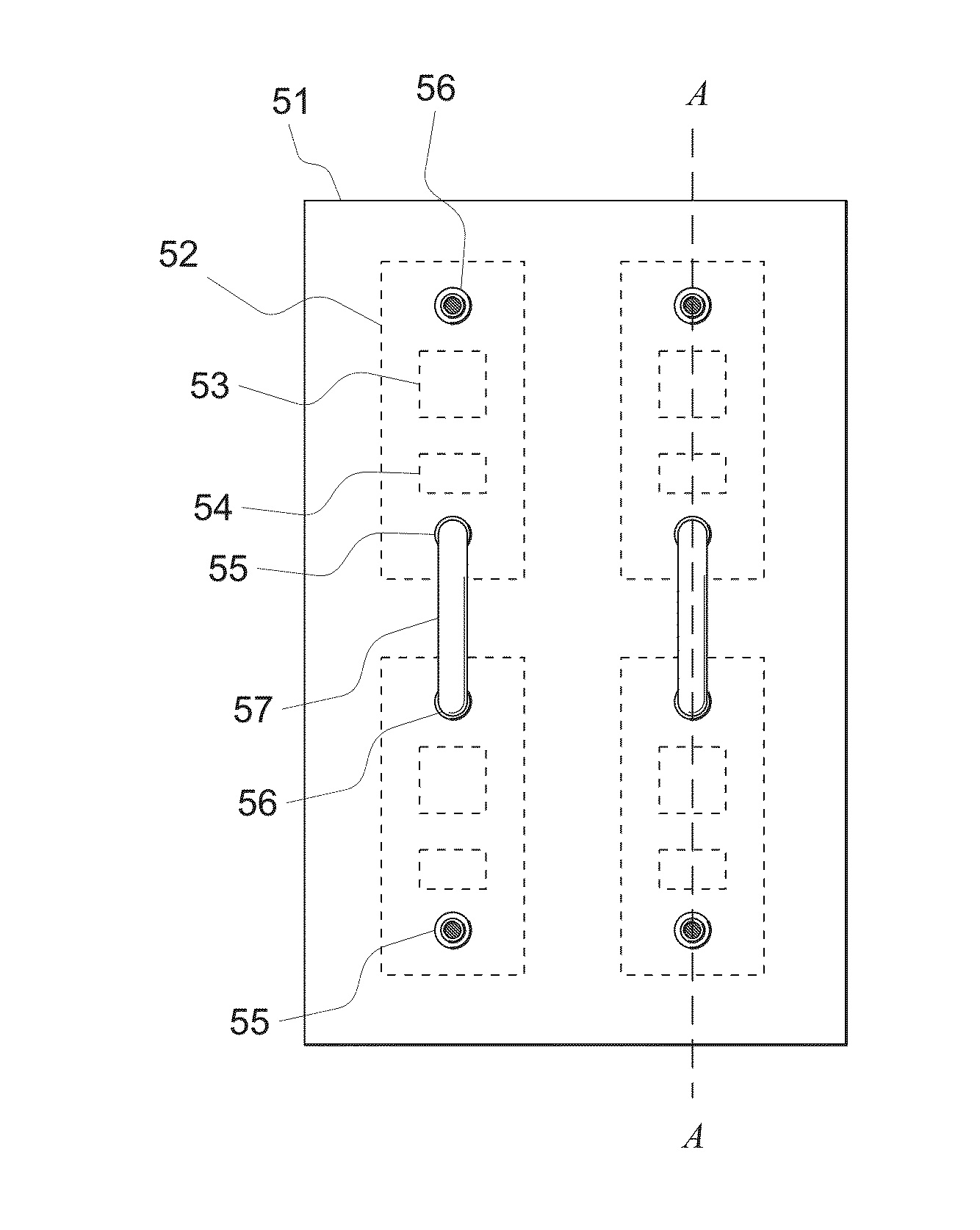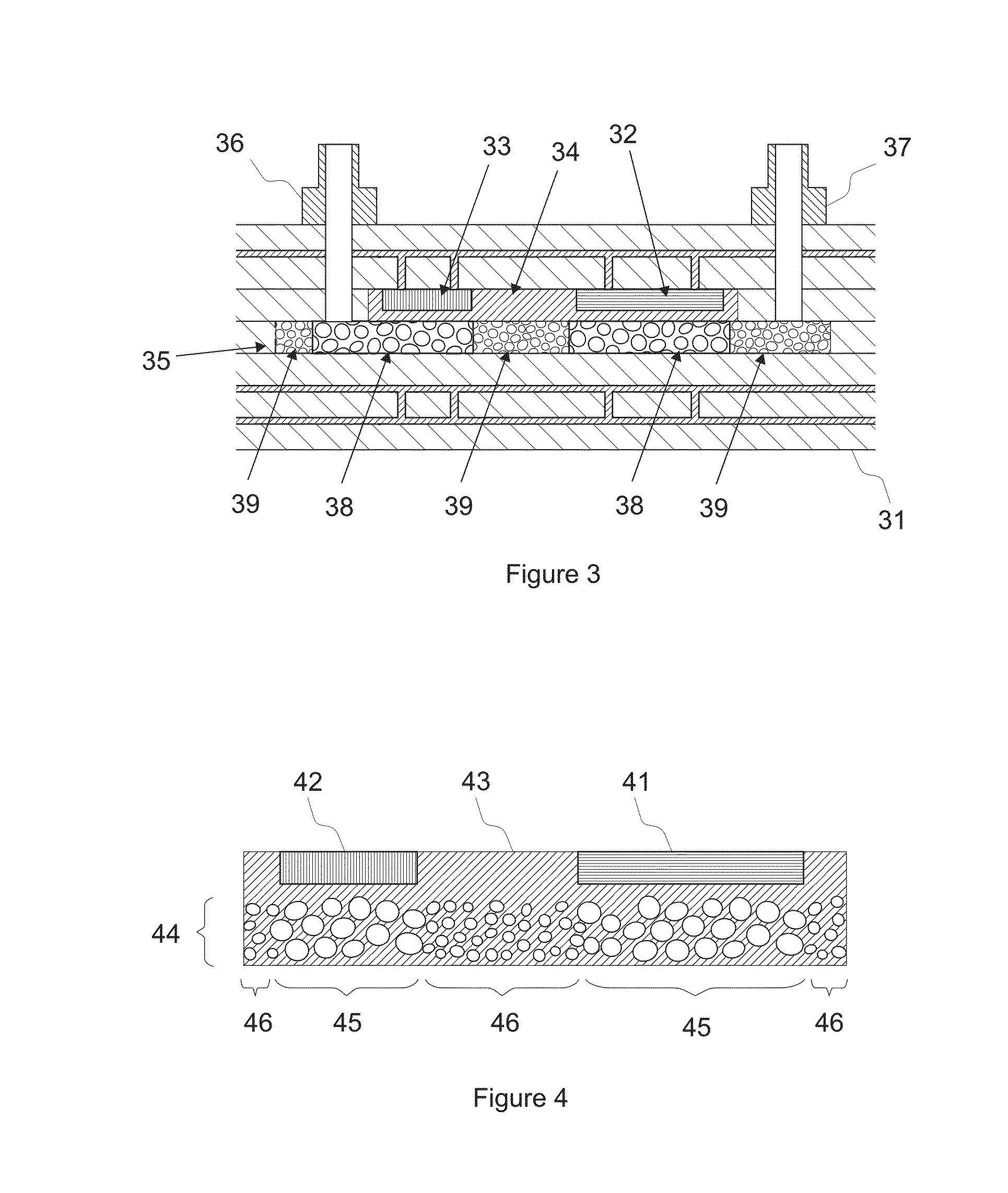Power semiconductor module and method for cooling power semiconductor module
- Summary
- Abstract
- Description
- Claims
- Application Information
AI Technical Summary
Benefits of technology
Problems solved by technology
Method used
Image
Examples
Embodiment Construction
[0016]The present disclosure presents a power semiconductor module comprising a printed circuit board (PCB). The PCB comprises at least one power semiconductor device and thermally conducting foam (TCF) embedded in the printed circuit board. The power semiconductor device may be a diode or a semiconductor switch, for example. The thermally conducting foam refers to a porous material that is thermally conducting and through which coolant can pass. The thermally conducting foam may be open-cell metal foam made of aluminium or copper, for example.
[0017]FIGS. 2(a) to 2(c) show details of an exemplary block of aluminium foam. FIG. 2(a) shows an aluminium foam block, which measures 10.0 cm×4.0 cm×1.5 cm, and is 92% porous (10 pores per linear inch=6.9 mm pore diameter). FIG. 2(b) shows a magnified view of a single pore of the foam block of FIG. 2(a). The pore size (i.e., the approximate diameter of the pore) is 7 mm in FIG. 2b. FIG. 2(c) shows the exemplary aluminium foam block as depicte...
PUM
| Property | Measurement | Unit |
|---|---|---|
| Pore size | aaaaa | aaaaa |
| Density | aaaaa | aaaaa |
| Electrical conductor | aaaaa | aaaaa |
Abstract
Description
Claims
Application Information
 Login to View More
Login to View More - R&D
- Intellectual Property
- Life Sciences
- Materials
- Tech Scout
- Unparalleled Data Quality
- Higher Quality Content
- 60% Fewer Hallucinations
Browse by: Latest US Patents, China's latest patents, Technical Efficacy Thesaurus, Application Domain, Technology Topic, Popular Technical Reports.
© 2025 PatSnap. All rights reserved.Legal|Privacy policy|Modern Slavery Act Transparency Statement|Sitemap|About US| Contact US: help@patsnap.com



